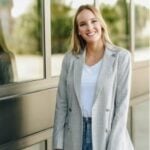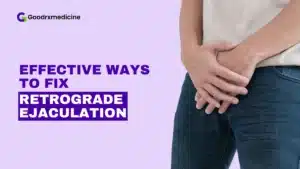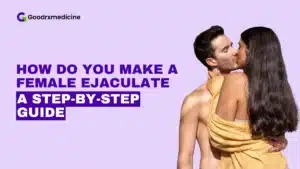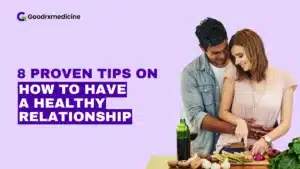Pink Eye, or Conjunctivitis, is a more common infection than you think. From a child to an adult, it can affect anyone. According to a 2018 study published by the Journal of the American Association for Pediatric Ophthalmology and Strabismus, 6 million individuals in the U.S. are annually affected with Conjunctivitis, which is primarily recognized by redness and irritation in the eye.
Unlike allergic or viral Pink Eye, which generally improves on its own, bacterial Pink Eye requires a proper course of antibiotics for safe and rapid relief. This is why it becomes crucial to choose the right antibiotic. Antibiotics are mainly prescribed to block bacterial growth and prevent the spread of infection.
In this article, you will read about 7 highly recommended antibiotic eye drops for Pink Eye, how they work, their dosage, and potential side effects. You’ll also learn about important precautions and understand when seeing a doctor is best.
- Ofloxacin
Ofloxacin belongs to a Food and Drug Administration (FDA)- approved class of medicines called Fluoroquinolones. It is one of the common antibiotics for bacterial Pink Eye. It blocks the bacterial enzymes DNA gyrase and topoisomerase IV to cause bacterial cell death.
General dosage guidelines suggest using 1 drop every 2–4 hours while awake for the first 2 days, followed by 1 drop 4 times daily for the next 5 days. Some common side effects, that are generally temporary, include red eyes, burning, irritation, and blurred vision. If your eyes swell, which doesn’t happen often, it’s best to consult a doctor.
Save up to 90% on your medicine bills

Mosi Eye Drop 5 ml

Oflox 5 ml

Xinep 5 ml

Pred Forte 10 ml
- Ciprofloxacin
Ciprofloxacin is another effective Fluoroquinolone antibiotic for Pink Eye. It is FDA-approved for treating bacterial infections and is prescription-only. Ciprofloxacin eye drops are effective against a broad range of bacteria. They block the enzymes topoisomerase IV and DNA gyrase and trigger bacterial death. These enzymes are essential for making copies of bacterial DNA and repairing it.
It is generally advised to put 1-2 drops in the affected eye(s) every 2 hours for the first 2 days of the treatment and then every 4 hours for the next 5 days. Some common side effects include a stinging or burning sensation and irritation in the eye. These effects are temporary and subside on their own. Seek medical consultation when rare effects like skin rash, eye pain, or nausea occur.
Also Read: For an in-depth understanding of Ciprofloxacin, its dosage and side effects, read Ciprofloxacin for Pink Eye: Dosage and Side Effects
- Moxifloxacin
Moxifloxacin is also a Fluoroquinolone with a function similar to that of Ofloxacin and Ciprofloxacin. It inhibits the bacterial enzymes that are important for making copies of DNA, causing bacteria to die and preventing infection.
Moxifloxacin is available under brand names like Mosi eye drop, and the treatment lasts for 7 days. Usually, it is suggested to take 1 drop twice a day. Some of the common side effects are eye dryness, redness, and itching. These effects usually subside on their own once the eyes adjust to the medication. However, if you experience dizziness or swelling of the eye, immediately seek medical supervision.
- Chloramphenicol
Chloramphenicol is a prescription-only antibiotic that treats Pink Eye by blocking protein synthesis in bacteria. This prevents bacterial growth and triggers death. It is effective against a wide range of bacterial strains.
Treatment usually lasts 5 days, but doctors recommend continuing the drops for another 48 hours to help prevent the infection from coming back.
The suggested dose is 1-2 drops every 2 hours for the initial 2 days. Then, for the next 3-5 days, the dose is generally reduced to 1 drop every 4 hours. Some common side effects include irritation, burning, or itching. These side effects usually go away as the body adjusts to the dosage. Consult a doctor if they persist for an extended period.
- Neomycin-Polymyxin B-Gramicidin
This medication is a combination of three antibiotics. It is a prescription-only medication that is commonly used for Pink Eye. This triple combination covers a wide range of bacteria. It functions by blocking protein production and targeting the cell wall of bacteria. This activity results in bacterial death.
Eye redness, itching, and swelling are the most common side effects. Contact a doctor immediately if you experience severe allergic reactions, such as a swollen face and nausea.
- Tobramycin
Tobramycin is an antibiotic that is FDA-approved for ophthalmic (eye-related) use. It belongs to a medicine class called Aminoglycoside antibiotics. It is a prescription-only solution that prevents protein formation in bacteria to promote their death. For Conjunctivitis, the recommended dosage is 1-2 drops every 4-6 hours.
Treatment can last up to 7 or 10 days, depending on the prescription and the symptoms you are experiencing. Some commonly observed side effects, usually temporary, include blurred vision, redness, and itching.
- Besifloxacin
Besifloxacin belongs to the Fluoroquinolone medicine class and can effectively treat eye infections caused by bacterial strains. It prevents bacterial growth and, ultimately, infection by targeting bacterial enzymes, including topoisomerase IV and DNA gyrase.
Treatment usually lasts for 7 days. Typically, 1 drop thrice a day is recommended. Some common side effects are blurred vision immediately after use, redness, and moderate eye irritation. These effects are mild and go away with time or as your body adjusts to the dose.
Precautions you should follow
Certain points must be considered while using antibiotic eye drops. Following these will make your treatment safer and help prevent contamination:
- Do not share eye makeup, towels, or pillows. It can spread infection.
- Try limiting or avoiding the use of contact lenses until the infection is fully treated.
- Always complete the prescribed course, even if symptoms subside quickly. Incomplete treatment can increase the risk of recurrence.
- Consult a doctor first if you are pregnant or breastfeeding. While topical medications have a low risk profile, some antibiotics may not be recommended in such conditions.
When to consult a doctor?
Immediately consult a doctor if:
- Symptoms do not improve after the general treatment duration.
- There is a development of the crust in the eye. Crusting refers to the formation of dry pus/mucus.
- Thick, green or yellow discharge is observed.
- Pink Eye infection comes back again after treatment.
- There is severe eye pain, development of sensitivity to light, and vision change.
Conclusion
Conjunctivitis, caused by bacteria, is highly common and generally treatable. It often clears up quickly with a timely dosage of medications. The right antibiotic eye drops, prescribed according to your symptoms, can shorten the infection’s duration, prevent complications, and ease discomfort.
Several effective antibiotics, such as Ciprofloxacin, Ofloxacin, Moxifloxacin, Chloramphenicol, Neomycin-Polymyxin B-Gramicidin, Tobramycin, and Besifloxacin, are widely available on prescription and can help control the condition. However, antibiotics should be used carefully, with special attention to precautions such as avoiding contamination and completing the treatment course.
If symptoms persist or worsen, consulting an eye care specialist is important to ensure proper treatment and diagnosis. Proper hygiene and eye care also play a crucial role in enabling quick recovery and controlling Pink Eye symptoms.

Frequently Asked Questions
How to tell if Pink Eye is viral or bacterial?
The key difference is that thick greenish or yellowish pus-like discharge is observed in bacterial infection, which makes eyelids stick together after sleep. In case of viral Pink Eye, clear or watery discharge is observed. Bacterial symptoms are more severe than viral symptoms.
What is the strongest antibiotic for Pink Eye?
Determining the strongest antibiotic depends on the type of bacteria triggering the eye infection and its severity. For severe infections, Fluoroquinolones like Besifloxacin or Moxifloxacin are mainly used. Compared to some older antibiotics, these antibiotics have a broad coverage of bacterial strains.
Which antibiotic eye drops are safe in pregnancy?
Tobramycin is one of the antibiotic eye drops that is generally considered safe for pregnancy. However, to avoid risks, it is strongly advised to seek medical consultation before using any medication during this stage.
How to use antibiotic eye drops?
It is essential to wash your hands thoroughly before using any eye drops. After applying the drops, gently close your eyes. Apply mild pressure on the eye’s inner corner to enable better solution absorption. Avoid touching the dropper tip to the eye or any other surface. It can create a risk of contamination and may affect the infection.
When referencing outside resources, GoodrxMedicine always provides full citations. To learn more about the measures we use to maintain the quality of our content, please review our Content Information Policy.











